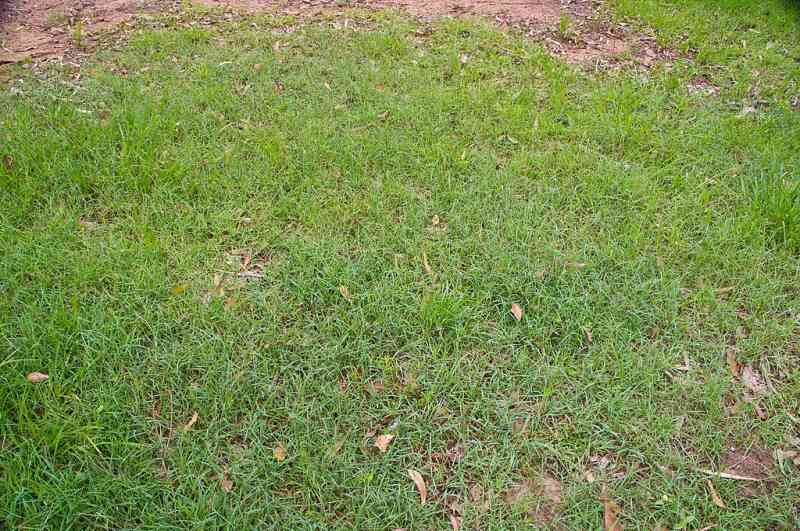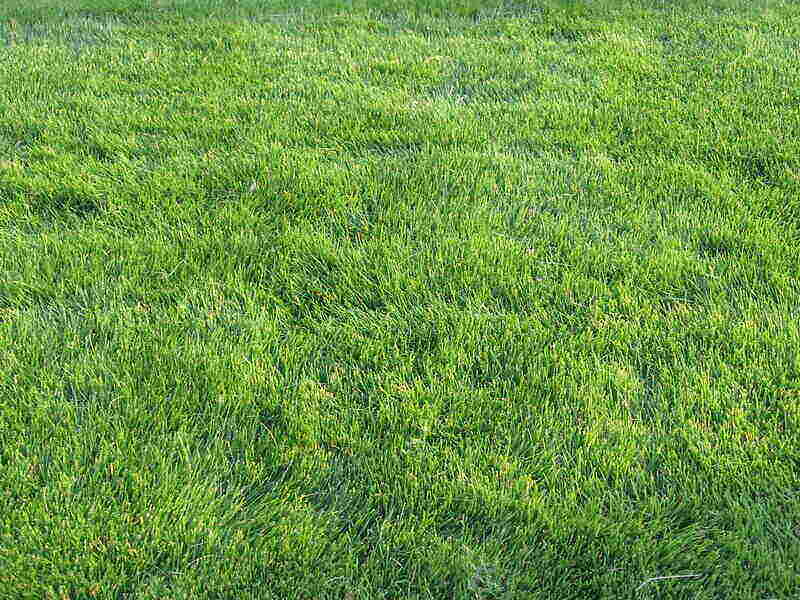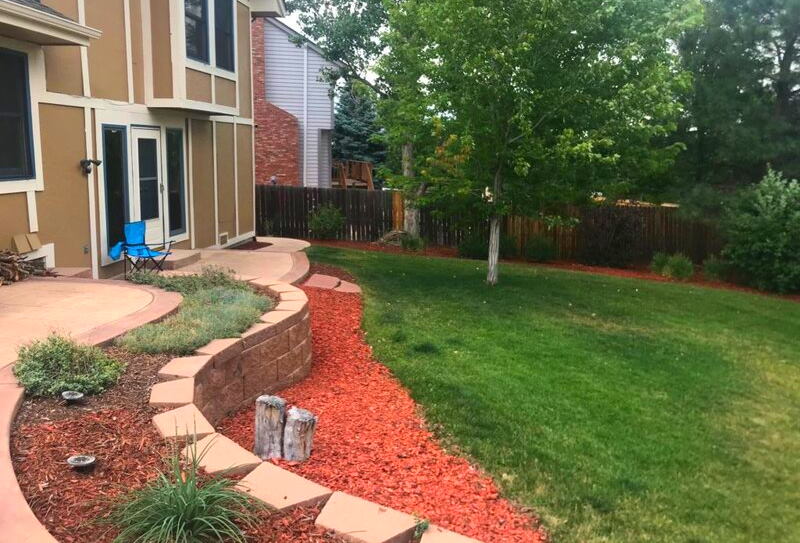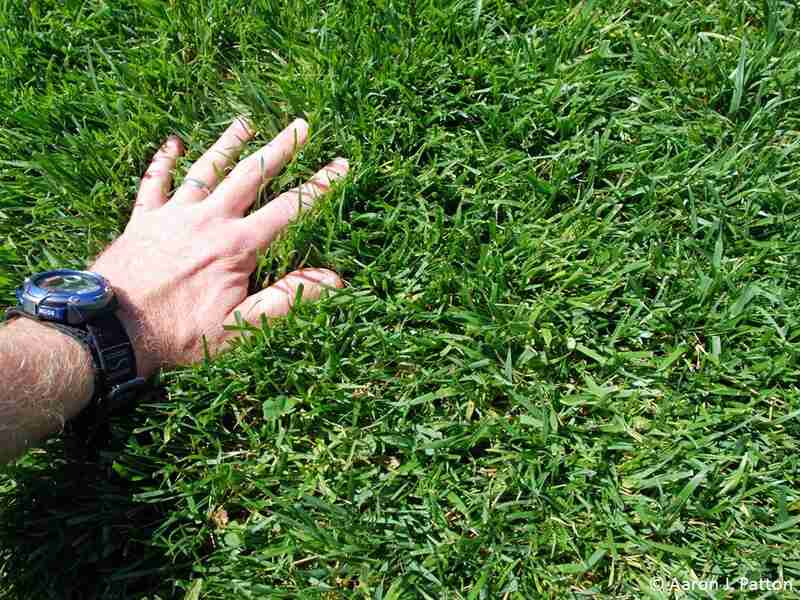Best Grass Types for Tulsa, OK
BY CALEB LEONARD | MAY 22ND, 2023 | LAWN CARE, OKLAHOMA, TULSAWhether you’re patching an existing lawn, or starting a new lawn from scratch, choosing the best grass type for your Tulsa lawn is key if you want it to survive the harsh temperature swings of the Sooner State. This article will look at the four best grass types for Tulsa, Oklahoma.
- Cold-Season vs. Warm-Season Grasses
- 4 Turf Grasses for Tulsa
- FAQ About Tulsa Grass Types
- Choose Plant and Grass Varieties for Your Tulsa Landscape
Cool-Season vs. Warm-Season Grasses
Tulsa is home to both warm and cool-season grasses. Understanding the differences between the two grass types will help you choose the grass most suitable for your lawn.
Cool-season grasses have adapted to grow in climates with extreme temperature fluctuations. A cool-season lawn emerges when the temperature drops between 60 and 75 degrees Fahrenheit. If your yard’s soil temperature drops below 45 degree Fahrenheit in winter, expect your lawn to enter dormancy. Cool-season grass also enters dormancy in summer as temps rise.
Because cool-season grass prefers mild summers and cool weather, it performs best in northern states.
Warm-season grasses grow optimally in climates where temperatures routinely stay above 75 degrees Fahrenheit. These grasses thrive throughout Oklahoma but can be damaged by an extremely harsh winter. Many warm-season grasses are sold as established sod, a perk for many homeowners looking to skip the seeding process.
When winter arrives, your warm-season lawn will fade from green to brown; resilient grass will green up beautifully with warmer weather and spring rains.
Because warm-season grass prefers long summers and mild winters, it performs best in southern states.
4 Best Grasses for Tulsa
Since Tulsa falls in the transition zone (which means it experiences both hot summers and frigid winters), it accommodates both grass types. When selecting a grass, it’s essential to understand the sun, soil, and water requirements for each species. Let’s take a closer look at the best grasses for Tulsa.
Warm-Season Grasses:
Cool-Season Grasses:
1. Bermudagrass

Photo Credit: John Robert McPherson / Wikimedia Commons / CC BY-SA 4.0
Often found on golf and tennis courts, bermudagrass grass is quick to bounce back from underwatering and heavy foot traffic. It has the fastest growth rate of any warm-season grass, which makes it a viable choice for homeowners starting lawns from seed. This grass is heat- and salt-tolerant, but be sure to give bermudagrass proper drainage to avoid water-logging the grass.
Bermudagrass has an extensive root system, making it more resilient against environmental stresses than other warm-season turf grasses. This highly drought-tolerant grass only needs about an inch of water each week.
Bermudagrass is so successful in Oklahoma that multiple cultivars have taken root across the state. Arizona Common, Guymon, Sunturf, Tifgreen, Tifway, and U-3 are all specially cultivated to succeed in the Sooner State.
Classification: Warm-season grass
Spreads by: Stolons and rhizomes
Shade tolerance: Low; thrives in full sun
Drought tolerance: High
Foot traffic tolerance: High
Maintenance needs: Needs frequent mowing due to fast growth rate; develops thatch easily; needs regular fertilization
Mowing height: Set the mowing height between 0.5 and 1.5 inches for hybrid Bermudagrass cultivars. Mow common Bermudagrass down to 1.5 to 2.5 inches.
Potential for disease: Good resistance to disease, although diseases are common; low resistance to insects
Soil pH: 6-6.5
Soil type: Tolerates most soil types
Other notes: Bermuda’s stolons and rhizomes spread aggressively and outcompete many weeds. However, it can sometimes be considered an invasive species and a nuisance. Many species tunnel underground and spread to neighboring flower beds and lawns.
2. Zoysiagrass

Photo Credit: Russbach at the English Wikipedia / Wikimedia Commons / CC BY-SA 3.0
A fine-textured warm-season turfgrass, Zoysiagrass spreads by rhizomes and stolons. This grass is sought-after because of its winter hardiness and ability to grow in light shade. However, its slow establishment rate makes it less desirable for some homeowners needing to patch a lawn in a hurry.
Zoysiagrass and fine-textured Bermudagrass should be considered when a top-quality, high-maintenance lawn is desired. Zoysiagrass’ dense growth makes it highly durable against foot traffic and weeds.
Classification: Warm-season grass
Spreads by: Stolons and rhizomes
Shade tolerance: Moderate
Drought tolerance: Moderate to High
Foot traffic tolerance: High, but recovers slowly from damage
Maintenance needs: Low nitrogen fertilization requirements, although it’s prone to thatch build-up.
Mowing height: Set mowing height between 1 and 2 inches.
Potential for disease: Good disease tolerance overall
Soil pH: 6-6.5
Soil type: Well-draining, some cultivars are more tolerant of a wide range of soils than others.
Other notes: The grass is moderately salt tolerant; it should be cut with a sharp mower blade; if it is in partial shade, it needs to be cut taller.
3. Kentucky Bluegrass

Photo Credit: Brenda Ryan / Wikilawn
KBG, or Kentucky bluegrass, is a cool-season grass well-suited to Tulsa, Oklahoma. This grass is a favorite among homeowners because of its winter resilience and ability to self-repair. A sun-loving grass, Kentucky bluegrass weakens in shaded areas. KBG can easily grow from seed and develops emerald to blue-green leaves with a medium to fine texture.
Spring and fall are optimal for growing KBG, while the summer heat slows its growth dramatically. Kentucky bluegrass durability depends on the cultivar. To create a more robust turf, mix in some tall fescue with your KBG. This grass requires 1 inch of water a week.
Classification: Cool-season grass
Spreads by: Rhizomes
Shade tolerance: Low
Drought tolerance: Moderate
Foot traffic tolerance: Moderate
Maintenance needs: Moderate mowing frequency and high fertilization needs.
Mowing height: Set mowing height between 2.5 and 3.5 inches.
Potential for disease: Moderate to high; prone to several diseases, such as dollar spot, leaf spot, necrotic ring spot, summer patch, and stripe smut.
Soil pH: 6-7.5
Soil type: Performs best in well-drained, heavy soils with high fertility.
Other notes: Kentucky bluegrass is the most winter-hardy turfgrass available. Seeds are best planted in early fall. For shaded lawns, choose varieties like Glade and Bensun.
4. Tall Fescue

Photo Credit: Aaron Patton / Purdue’s Turfgrass Science Program
This resilient grass grows well in various climates and is highly resistant to drought, heat, and shade. Tall fescue lawns are an excellent option for homeowners looking to improve their lawn’s resilience and durability. This versatile grass may be an excellent choice for you, depending on where you live and your lawn goals.
Tall fescue is one of the most drought-tolerant cool-season grasses. It only needs 1.25 inches of water a week.
Tall fescue is an effective option for shaded lawns too. This cool-season grass grows best in fall and spring but may lie dormant in the summer, unless given supplemental water and fertilizer, especially in areas with full sun.
Classification: Cool-season grass
Spreads by: Produces short rhizomes but has a bunch-type growth habit
Shade tolerance: Moderate
Drought tolerance: Moderate to High
Foot traffic tolerance: Moderate
Maintenance needs: Frequent mowing. Does not produce significant thatch.
Mowing height: Set mowing height to 2 inches when grass reaches 3 inches tall.
Potential for disease: Tolerant of most diseases when properly maintained.
Soil pH: 5.5-6.5
Soil type: Adapted to a wide range of soil conditions, but prefers fertile clay soils with good drainage.
Other notes: The ideal mowing height for Tall Fescue is 3–3.5 inches. Using the highest setting on most lawnmowers will ensure your tall fescue is always maintained at a healthy height. Your tall fescue can be mowed at this length any time of the year.
FAQ About Tulsa Grass Types
Bermudagrass is the most durable turfgrass for homeowners with rowdy dogs. Bermudagrass’ deep roots and quick recovery time make it an excellent playing field for children and dogs. Tall fescue is the more urine-resistant choice if you are concerned about pets damaging your grass while marking their territories on your property.
Oklahoma lawns commonly use tall fescue to cover shady areas since it is more shade-tolerant than warm-season grasses and more drought- and heat-tolerant than other cool-season grasses.
Warm-season grasses should be planted between May 1st and July 1st in Oklahoma, while late September and October are ideal for planting cool-season grasses.
Choose Plant and Grass Varieties for Your Tulsa Landscape
Selecting a turfgrass that can withstand Tulsa’s temperature swings is the first step toward creating your best landscape. Many of Oklahoma’s native plants are perfectly adapted to Tulsa’s climate, too. Explore native flowers, shrubs, trees, and vines to create a drought-tolerant landscape as rugged and beautiful as Oklahoma.
Regardless of the grass type you install, you may discover you need maintenance help from a lawn care professional near you. We have trusted pros in Tulsa, Oklahoma City, and many other cities across the state.
Main Photo Credit: Woodward Park / I, Tim Morgan / Wikimedia Commons / CC BY-SA 3.0